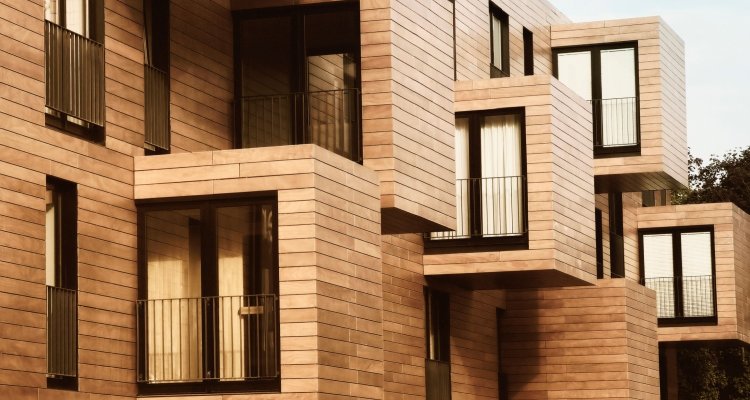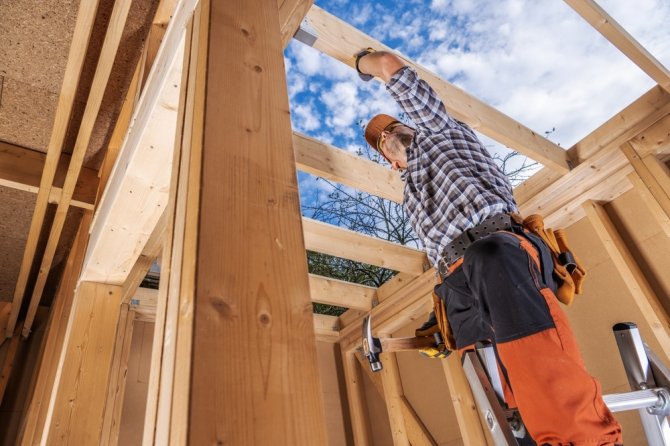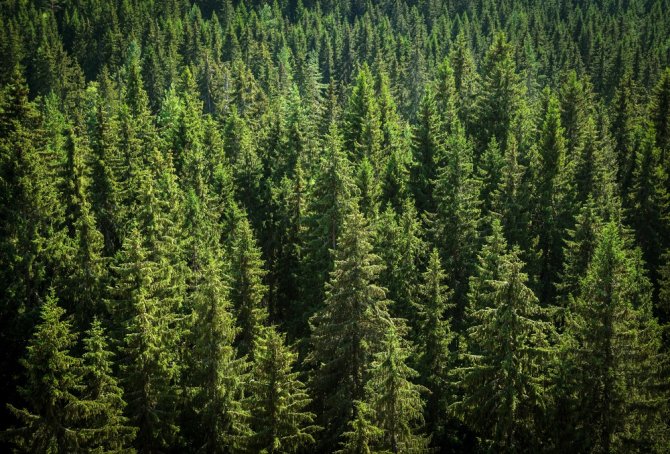
News
Biobased construction profitable up to sixty meters
Materials like bricks, concrete, and steel, which are currently used for building homes and other structures, contribute significantly to CO2 emissions. By using materials made from biomass, or ‘biobased’ materials, we can substantially reduce these emissions. Examples of biobased materials include wood and fibre crops. But how feasible is this? Project manager for the biobased economy, Arjen van Kampen, and his colleagues in Wageningen are investigating this in collaboration with construction parties and knowledge institutions such as TU Delft. “We shouldn’t just assume that there will always be enough wood available.”
Imagine walking through a large Dutch city. The offices, shops, and houses are not made of red bricks or concrete, but of wood in shades ranging from warm golden brown to deep mahogany. Plants grow on the roofs and walls, providing homes for birds and insects. This is the future Van Kampen envisions. And thus began his mission: to find out whether large-scale construction with environmentally friendly building materials is possible.
Cutting down forests for housing does not sound very environmentally friendly. How does that work?
“During their growth, trees absorb carbon dioxide (CO2) from the air and store the carbon. By using the wood from trees in construction projects, this carbon remains stored, while materials such as steel and concrete release more CO2 into the atmosphere. This is because it takes a lot of energy to make these materials, and the process emits CO2. For example, iron ore for steel must first be mined and then heated to 2300 degrees Celsius during processing. In the case of wood, you only need to saw the tree and treat the wood. In sustainably managed forests, new trees are planted after felling, so the number of trees remains constant.”

Can we simply replace traditional materials with biobased alternatives?
“To achieve largely biobased buildings, we need to build differently. Fortunately, those methods are already available. For structural building material in biobased construction, wood is the first choice. This can be used to make a building in two ways. You can cross-laminate sawn wood into a sort of wood blocks to directly form a (load-bearing) wall, floor, or façade (cross-laminated timber or CLT). This is a strong structure, but it requires a lot of wood. Another option is to build a wooden skeleton and fill it with pressed panels and insulation material from wood chips or fibre crops like hemp, flax, and Miscanthus. This construction method provides strength and only uses wood where it is truly needed. That is smart because wood is not endlessly available.”
Building higher than sixty metres consumes too much wood and becomes unsustainable
Does this work for the construction of high buildings such as apartment complexes?
“In high-rise buildings, the construction is somewhat different. Architects use a large concrete column in the centre of the building on which all floors rest. Together with TU Delft, we have investigated whether we can replace this concrete column with wood. Since wood is naturally less strong than concrete, such a wooden column needs to be thicker. Moreover, the higher the building, the thicker the column, and this increases exponentially. According to our calculations, a model building with five floors requires wood from roughly 250 trees. For ten floors, it is already more than a thousand. Adding another five floors requires more than four thousand trees. In that case the building is approximately sixty metres high. For even taller buildings, there is a tipping point where biobased construction becomes less viable due to the enormous amount of wood needed. It no longer outweighs CO2-intensive materials like steel and concrete.”
We have enough wood for the next five to ten years, but if all of Europe adopts biobased construction, we will face shortages
So can we not construct high-rise buildings biobased?
“Above sixty metres, building with wood requires excessive material use and is indeed not advantageous. However, architects can use a hybrid approach, employing both wood and concrete or steel in the construction. This still offers a CO2 saving by replacing part of the steel or concrete. But in the Netherlands, buildings over sixty metres are rare.”

Is there enough wood for large-scale biobased construction?
“If we assume that biobased construction will become standard in the Netherlands, we can harvest extra wood in Northern Europe. This wood also produces chips for panel and insulation material. We have enough wood for the next five to ten years, but if all of Europe adopts biobased construction, we will face shortages. We also need to be careful not to assume that wood will always be readily available. For example, Norway spruces – one of the most commonly used tree species in construction – are currently being plagued by the bark beetle, a bug that burrows through the tree, damaging the wood. This means we have to write off forest reserves we originally counted on.”
How can we continue biobased construction after those ten years?
“It is uncertain to what extent biobased construction will be adopted across Europe. For now, there is enough wood. However, it remains important to use biobased resources efficiently and invest in our own production. Fibre cultivation is gaining extra attention because these crops align well with the policy to reduce agricultural emissions. The government is encouraging this cultivation with subsidies to keep sufficient fibres available for panel production. Residual materials like sawdust, pruning wood, and grass are already widely available to be processed into insulation and panel materials. Additionally, I see opportunities in establishing more production forests in the Netherlands. This would add variety to the landscape, promotes biodiversity, and store carbon.”
How many trees do we need to plant? And where?
“To grow enough wood for biobased new construction and replacing demolished houses in the Netherlands, we would need an additional 250 thousand hectares of forest, on top of the 364 thousand hectares that the Netherlands currently has. These plans are not yet in place, and it is not easy to fit into our densely populated and intensively used country. Moreover, trees grow slowly, meaning they will only be ready for harvesting in about sixty years. However, that does not mean we should not plant more forest: I see it as a gift to future generations. They will have a forest from which they can meet their building material needs. That would be wonderful, don’t you think?”